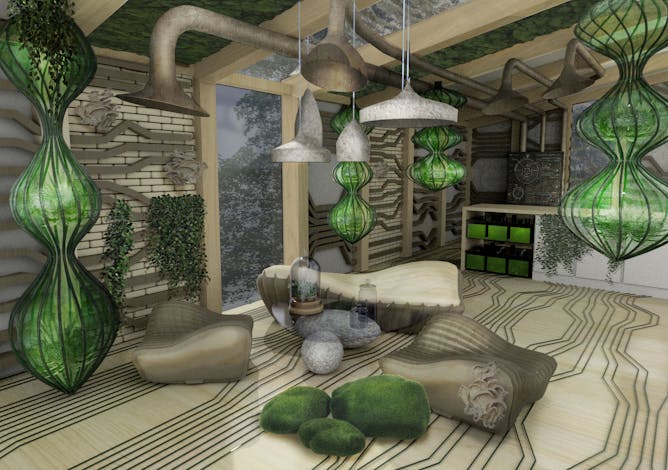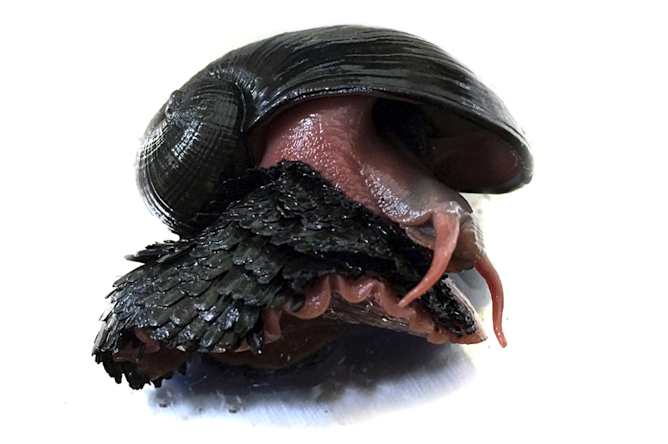|
|
|
Editor's note
|
|
Imagine buildings that come alive – capable of growing, breathing, digesting and even healing themselves. In fact, don’t imagine – just take a look at the range of biotechnology that’s set to turn this idea into reality, in the not-so-distant future.
Nature is capable of extraordinary feats of engineering, and scientists and architects are coming up with clever ways to use it in human constructions. Materials like mycelium – the root network of fungus – can grow on wood chips and coffee grounds in very short periods of time, creating structurally stable building materials with the potential to grow and adapt. Bacterial spores can also be used to create self-repairing concrete, or walls that open and “sweat” like pores.
As well as being extremely cool, living buildings could do us, and our environment, the world of good: from probiotic kitchen surfaces that help boost immune systems, to buildings that “digest” waste and turn it into green energy for homes and offices. But we’ll also need to prepare ourselves for the fact that, like all living things, these incredible buildings will eventually die.
Of course, humanity still has a long way to go, before we can claim to coexist happily with nature. Species in even the most inaccessible parts of the Earth are affected by human activity. This includes the rather remarkable looking Sea Pangolin, which has become the first marine species to become officially endangered due to the threat of deep sea mining. At the very least, we can all make life that little bit better for our furry friends at home, starting with this definitive guide on how to stroke a cat, according to research.
|
Emily Lindsay Brown
Editor for Cities and Young People
|

|
|
Top stories
|

Imagining the interior of a living building.
Assia Stefanova/Hub for Biotechnology in the Built Environment.
Martyn Dade-Robertson, Newcastle University
From building blocks made of fungus to self-healing concrete, architecture is using biotechnology to make buildings come alive.
|

The scaly-foot snail, otherwise known as the sea pangolin.
Julia Sigwart, Queen's University Belfast
When Julia Sigwart went looking for the scaly-foot snail – or Sea Pangolin – in the deep ocean, they were hard to find. Now they are seen as endangered from the prospect of deep sea mining.
|

Pexels
Lauren Robin Finka, Nottingham Trent University
Cats and humans have different ways of communicating and sometimes that can lead to problems.
|
Politics + Society
|
-
Michelle Bentley, Royal Holloway
The Pentagon has been instructed by the House of Representatives to investigate whether ticks were infected with Lyme disease by the US military.
-
Tony Walker, La Trobe University
The wisest course from here would seem to be reopening discussions with Tehran about Gulf security and an American-imposed sanctions regime. But this will be easier said than done.
-
Abdullah Yusuf, University of Dundee
Forty years ago this shocking event paved the way for a 24-year rule of fear that saw Iraqi citizens repressed, tortured and murdered.
|
|
Science + Technology
|
-
Fabienne Peter, University of Warwick
We can justify different standards for different Twitter users by turning to the philosophical ideas about public debate.
-
Abigail Harrison Moore, University of Leeds; Graeme Gooday, University of Leeds
In the race to bring electricity to the masses, the crucial role that women played in it being accepted by the masses is left at the sidelines.
|
|
Business + Economy
|
-
Tom Baum, University of Strathclyde
Reducing air travel may have a positive effect on climate change but it will inevitably damage developing countries that rely on tourism for their chances of prosperity.
|
|
Environment + Energy
|
-
Kasim Rafiq, Liverpool John Moores University
Thousands of wildlife photographs are taken every day – they could prove very valuable for conservation.
|
|
Arts + Culture
|
-
David Murphy, University of Strathclyde
Pan-African festival marked the emergence of a post-imperial world
|
|
Health + Medicine
|
-
Terry Wahls, University of Iowa
A doctor with MS who experimented with diet and other treatments has experienced a slowing of her decline – now she's researching why it happened.
|
|
| |
Featured events
|

|
King's Manor, York, York, YO1 7EP, United Kingdom of Great Britain and Northern Ireland — University of York
|

|
Meadow Suite, Park House, University of Reading Whiteknights Campus,, Reading, Reading, RG6 6UA, United Kingdom of Great Britain and Northern Ireland — University of Reading
|

|
The Forum, Streatham Campus, Exeter, Devon, EX4 4QJ, United Kingdom of Great Britain and Northern Ireland — University of Exeter
|

|
University of Essex, Wivenhoe Park, Colchester, Essex, CO4 3SQ, United Kingdom of Great Britain and Northern Ireland — University of Essex
|
|
|
|
| |
| |
| |
| |
| |
|
|
|
|
|
|
|